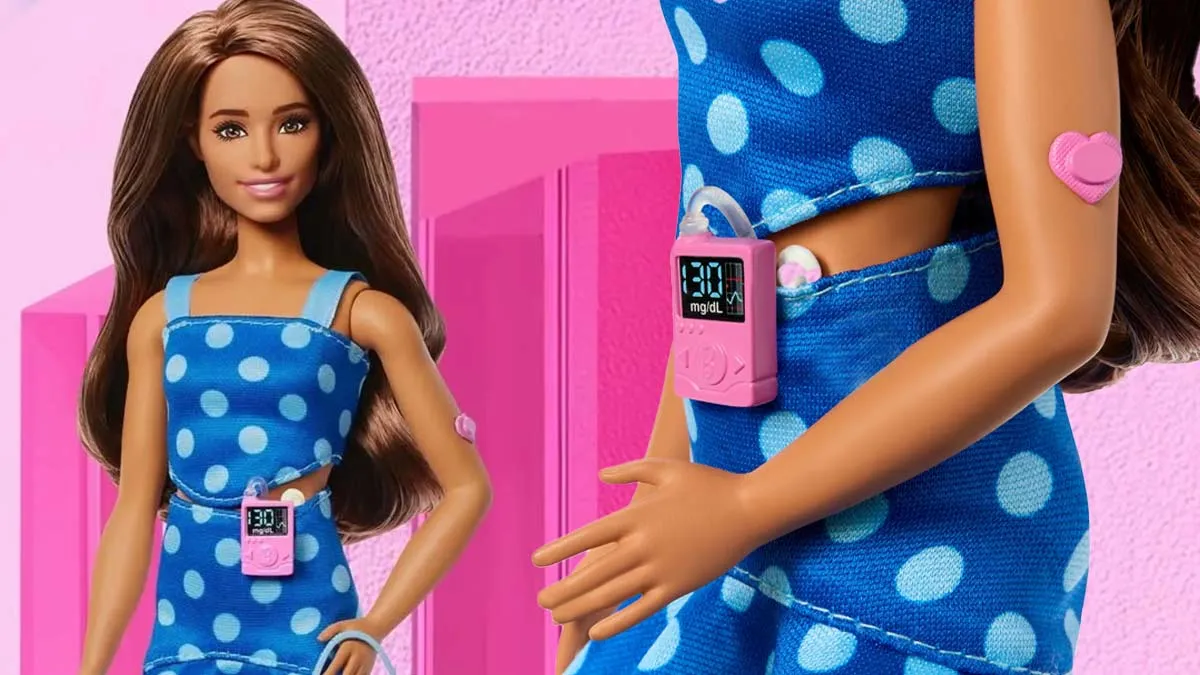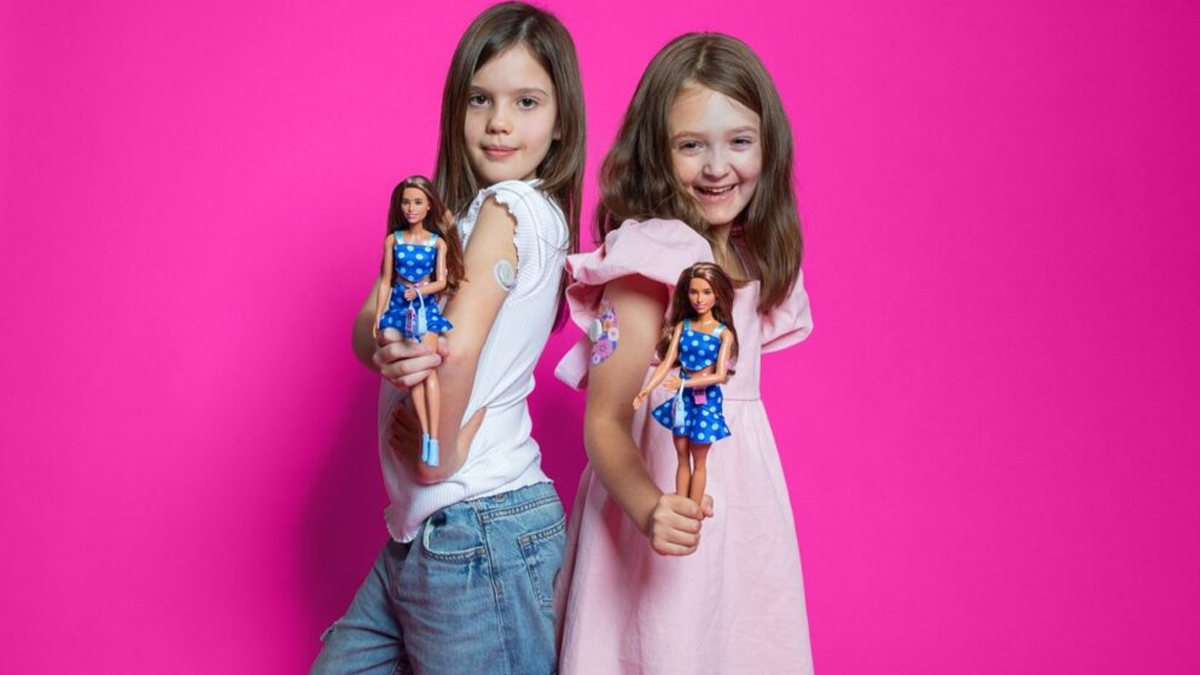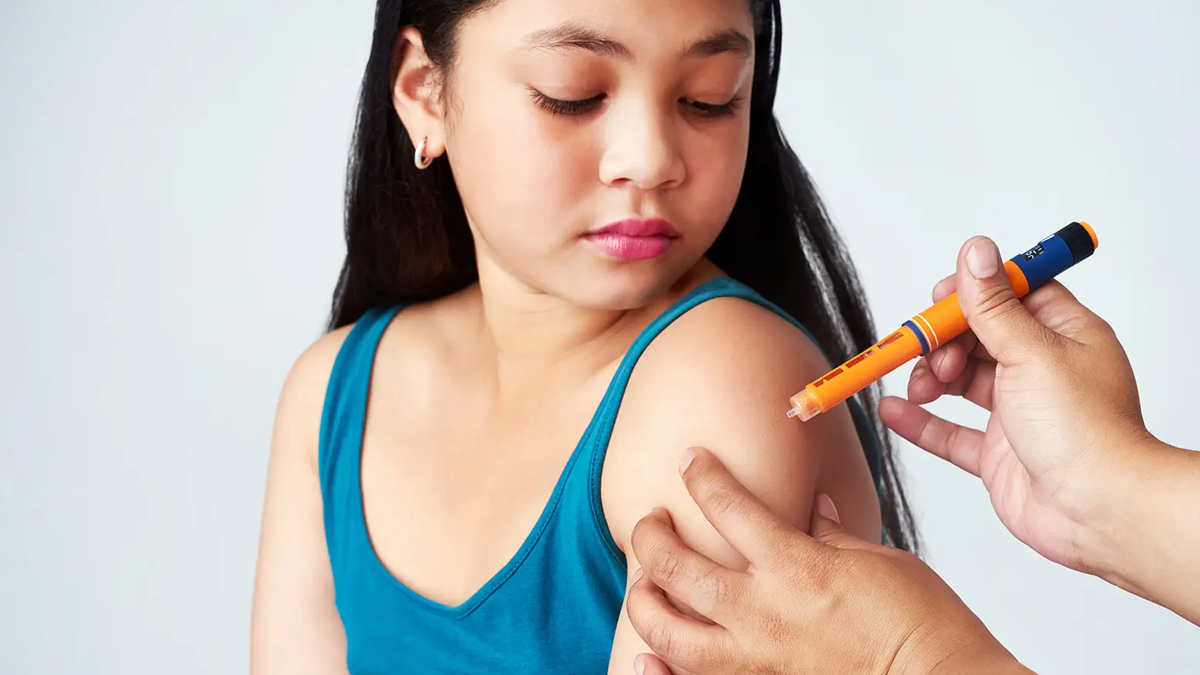
Mattel has just launched a new Barbie doll that’s making headlines for all the right reasons. This type 1 diabetes barbie isn’t just any doll as this comes with a continuous glucose monitor (CGM) on her arm and an insulin pump around her waist, both in her signature pink. The diabetic Barbie is a part of the 2025 Barbie Fashionistas line, and she represents children living with type 1 diabetes. Mattel worked closely with the diabetes organisation Breakthrough T1D to make sure every detail, from the medical devices to the blue polka-dot dress, a nod to diabetes awareness. Kate Moss’s daughter Lila Moss has been featured as the model for the campaign.
Table of Content:-
The Purpose Behind the New Barbie
Mattel $MAT's Barbie just dropped its first-ever doll with Type 1 diabetes. Comes with a CGM on her arm, an insulin pump on her waist, and even Barbie-pink medical tape. pic.twitter.com/7opDygFNNm
— Wall St Engine (@wallstengine) July 8, 2025
The main goal of this new Barbie is to help more kids feel seen and included. Krista Berger, Senior Vice President of Barbie and Global Head of Dolls explains, “Barbie helps shape children’s early perceptions of the world, and by reflecting medical conditions like Type 1 diabetes, we ensure more kids can see themselves in the stories they imagine and the dolls they love”. By adding a glucose monitor and insulin pump, Mattel is showing that living with diabetes is just one part of life, and it doesn’t have to stop anyone from dreaming big.
ALSO READ: How Did David Corenswet Train For Superman: Legacy Role: Exploring His Workout Regime
Why This Inclusive Doll Matters![barbie doll with diabetes 1 - 2025-07-09T115014.470]()
For many families, this Barbie is much more than a toy. Children with diabetes often feel different because of their medical devices or daily routines. Now, they can see a doll that looks just like them, right down to the heart-shaped tape holding the CGM in place and the toy phone displaying a real-looking glucose app.
The launch has sparked a wave of emotional reactions online. Parents have shared how grateful they are that their kids can finally play with a doll that reflects their real lives. Adults who grew up with diabetes say they wish they’d had a doll like this when they were young. Some even say they’re buying the doll for themselves, just to feel seen and understood.
Emily Mazreku from Breakthrough T1D, who also lives with diabetes, said, “Living with type 1 diabetes involves experiencing highs and lows, both emotionally and physically. We wanted Barbie to reflect that reality in a way that’s empowering and visible for kids everywhere”.
Representation and Support for Kids![diabetes girl 2 - 2025-07-09T115016.020]()
This Barbie isn’t alone in her mission. She joins a growing line of Fashionistas dolls that include Barbies with Down syndrome, vitiligo, hearing aids, and wheelchairs. The goal is to help all children feel included and to start conversations about different health conditions and abilities. The blue polka-dot dress and accessories are not just stylish. They’re symbols of diabetes awareness, helping to spread understanding and spark important conversations.
Research published in the journal Frontiers in Psychology discovered that when kids notice toys which resemble them or with whom they can identify, this raises their self-esteem and makes them more accepted by their friends. Representation in toys can help children develop a positive self-image and foster empathy among all children, not just those with the condition.
ALSO READ: BTS’ Taehyung Says “My Ribs Hurt from Hunger” After Losing 2kg in 4 Days: Is This Normal?
Conclusion
The new Barbie with diabetes, insulin pump, and glucose monitor is a giant leap in the direction of inclusivity. She makes kids who have diabetes feel known, loved, and proud of themselves. This doll is not only a toy, but it's a statement that every child's narrative counts and that everyone should be included.
Also watch this video
How we keep this article up to date:
We work with experts and keep a close eye on the latest in health and wellness. Whenever there is a new research or helpful information, we update our articles with accurate and useful advice.
Current Version

